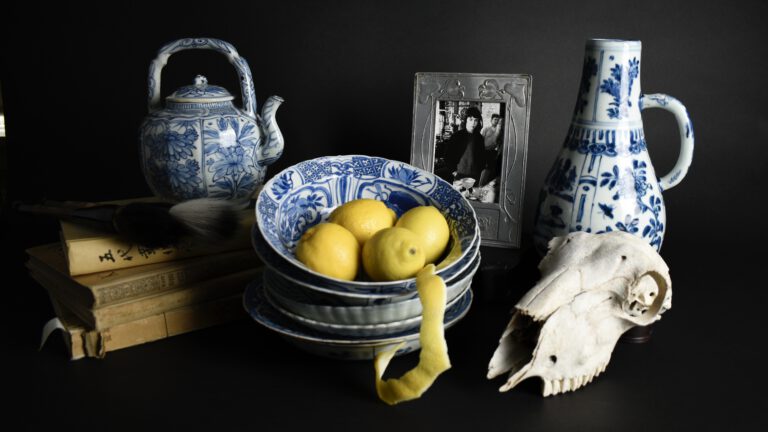
Robert McPherson Antiques 40th Anniversary 1980 – 2020
Dealer in Rare and Unusual Chinese and Japanese Ceramics – Established in 1980
40 Years - A Lifetime of Antiques
- CAMDEN PASSAGE AND GRAY'S ANTIQUES 1980-1991
- SHARING A SHOP IN KENSINGTON CHURCH STREET 1991-2002
- OLYMPIA FINE ART and ANTIQUES FAIR c.1993 – 2005
- OUR FIRST EXHIBITION 2001
- OUR SHOP IN KENSINGTON CHURCH STREET 2002 – 2012.
- DEALING ON-LINE AND EXHIBITING IN KENSINGTON CHURCH STREET FROM SEPTEMBER 2012.
- EXPERT WITNESS
- ASIAN ART IN LONDON
- EIGHT DAYS IN JUNE
- MOVE TO THE NETHERLANDS
- Robert McPhersonMy Father took me to Camden Passage and collected me every Saturday and my outdoor stall flourished, two adjoining tables were then taken in the market. By then I had a regular following and one or two of these customers still come to buy from me after all these years.
CAMDEN PASSAGE AND GRAY’S ANTIQUES 1980 – 1991
My interest in antiques started when I was a young boy. As a school boy it was above my means to collect antiques, so I would buy and sell what I could to fund my collection and also propagating plants so I could selling them to my teachers. I began collecting military cap badges and coins when I was about ten years old. At the age of fourteen I visited the war graves of France, this confrontational, prompted me to sell my military collection as soon as I could.
My interest turned to Victorian antiques, especially ceramics. However I soon acquired my first piece of Chinese porcelain : an 18th century Qianlong Famille Rose tea bowl for the sum of ten pounds.
After a short period working on Saturdays for a jewelry dealer, Peter Gray, I decided to have my own weekly stand at the Camden Passage Antiques Market in Islington, London. On the 25th of May 1980 at the age of 16 my career as an antique dealer began.
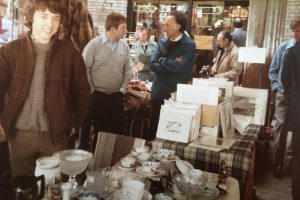
The first day was a great success with sales totaling £74.50, more than I could ever have dreamed of. The first item I sold was a pair of Victorian scissors for £2, other pieces include a Foley cup with a Boer war design (£4), a photograph of a lady in a frame c.1920 (75p) and ‘3 ironstone ducks’ won at a school Fete for £2.
My stand at Camden Passage enabled me to collect antiques and my teenage bedroom soon looked like a museum, filled with hundreds of pieces of pottery and porcelain, paintings, prints drawings and furniture.
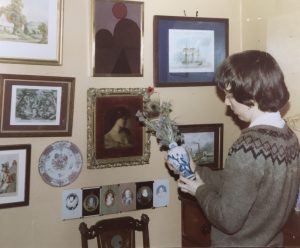
During this period I started studying the conservation of prints and drawings at the Camberwell Art School in London, after all my mother had said I should get a ‘proper’ job. Being a conservator at a museum certainly would have been a proper job but my real interest was always with the objects themselves.
I would go to early morning markets before college to buy things for my Saturday stall and on holidays I would go on buying trips out of London, often staying with my Aunt and Uncle in Taunton.
My Father took me to Camden Passage and collected me every Saturday and my outdoor stall flourished, two adjoining tables were then taken in the market. By then I had a regular following and one or two of these customers still come to buy from me after all these years.
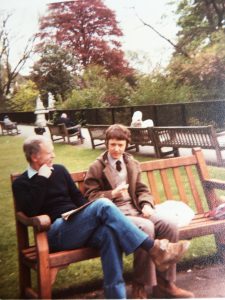
When I was nineteen, I moved indoors to Grays Antique Market near Bond Street in central London, together with my friend David Glick. I have known David since we were 12, he lived next door to me in Musewell Hill, North London. We had a few successful years together in this business which we rather grandly called Apollo Antiques. David left to pursues other interests but came back to dealing in antiques. He has been at the famous Portobello Road selling antique English glass for many years. We still meet up and have a beer or two at the Churchill Arms in Kensington Church Street, we were destined to be life long friends.

It was at this period I became a specialist in Chinese ceramics, very much inspired by my visits to Cornwall where I visited the Leach Pottery studio from Nic Harrison, who studied under Bernard Leach.
Seeing their pottery, I started to look at the oriental ceramics in more depth and realized the great variety that was produced and how these objects told intriguing stories, since many of them where handmade and showed the makers hand in various ways.
The business soon expanded and my stand at Grays doubled in size. I gained a group of customers around me that had the same passion for the objects and from them I was able to learn more.
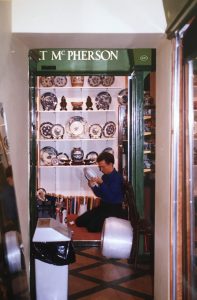
SHARING A SHOP IN KENSINGTON CHURCH STREET 1991 – 2002
In 1991, Robert McPherson Antiques moved to Stockspring Antiques, dealers in English Ceramics, who were located in Kensington Church Street. The early 1990s were a difficult period in which to trade but the business soon began to thrive and expand. The shop run by Stockspring Antiques was at various times shared by Errol Manners, Gary Atkins and also Rod Jellicoe.
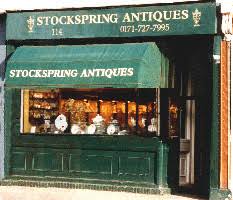
While at Stockspring Antiques I organized my first Exhibition of Shipwreck Ceramics, this was also the first exhibition at a shop. In the meantime taking up half of the shop due to my increasing stock.
During this period I started vetting antique fairs and I became an elected member of The British Antique Dealers Association (B.A.D.A.) in 1999.
- Helen EspirLooking through the slightly fragmented card index of my collection, I can count up to 47 purchases of Chinese porcelain from Robert. The earliest dates from 1994 when he was in Stockspring. The numbers and gradually increase throughout the 2000s when he had the shop in Kensington Church Street, plus visits to his and Georgina's home in Wimbledon, up to the present day when they continue to On Line from the Netherlands - almost 30 years, during which Robert has become a trusted dealer and a good friend.
OLYMPIA FINE ART and ANTIQUES FAIR c.1993 – 2005
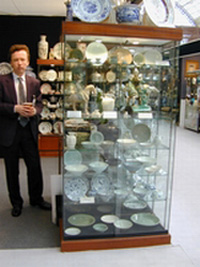
From the 1990s, the Summer Olympia Fine Art and Antiques Fair was an important event each summer. I remember it with great fondness even though I never forget how much work it was. It was thrilling, the bussel of moving boxes, unpacking and selling while unpacking. Ten days of standing up all day and into the evening took its toll.
The connections with the people, both the customers and the colleagues was always a returning highlight of the season. I remember the early vetting, the famous and sometimes even royal customers getting their front-seat viewing over our stands.
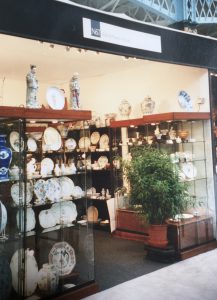
I took great pleasure in making my stand look special with much attention to detail, I realised early on that selling was not just about the object but also about the look of the stand.
When I stopped exhibiting at the fair to focus on exhibitions at my own shop, I was invited to join the vetting committee. It was nice to see the fair from a totally different perspective.
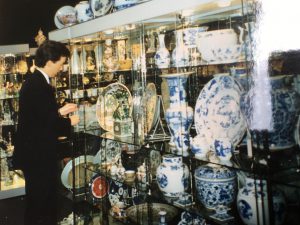
OUR FIRST EXHIBITION 2001
The sale of 15th century Vietnamese pottery by an auction in America from a shipwreck, referred to as the Hoi An Hoard, was very exciting. There were so many new forms, so many designs that were not previously known.We bought hundreds of pieces, from ewers decorated with elephants to dishes with aggressive looking fish eating other fish, tiny boxes, and vases painted with birds. We were it seems the only English dealers to be excited by this new discovery, most dealers were not interested as it was not Chinese porcelain but to us this made it more interesting. Knowledge of Vietnamese ceramics was transformed by the discovery of this important wreck. The British Museum purchased several pieces from the auction.
We decided to have an exhibition based on this newly discovered wreck but we included ceramics from other wrecks as well. It was extremely successful and led us to have two more exhibitions of ceramics from shipwrecks.
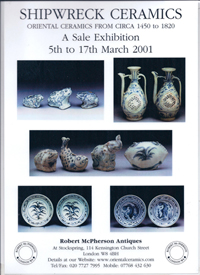
The Hoi An Hoard, as has been the case with several other wrecks, was not found by archaeologists nor even by historians, but by fishermen, though happily not excavated by them. It became in fact the only commercial underwater site to have been excavated in a correct archaeological manner. It is one of the earliest cargoes (dated c. 1450-1500) to have come on to the market and to my mind is the most interesting and important of them all. Moreover, it is the only large Vietnamese cargo to have been discovered. A partnership was formed, to take charge of this landmark excavation, between the Vietnamese Government and M.A.R.E., the Maritime Archaeological Research Unit of the University of Oxford, under the Directorship of Mensun Bound, Triton Senior Research Fellow, Saint Peter’s College, Oxford.
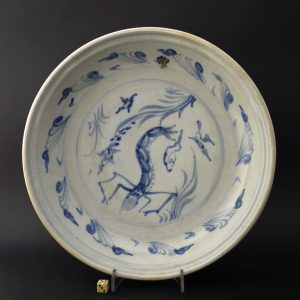
Vietnamese ceramics were not treated with the importance they deserved until very recently. Several excellent new books have now been published on the subject and an exhibition of Vietnamese Blue and White has been held at the British Museum, where objects from the Hoi An Hoard featured among the exhibits. Together with the recent excavation of the kiln sites, this cargo underlines the importance and individuality of Vietnamese ceramics. I believe that the cargo in fact contains more Vietnamese ceramics of the period than exist worldwide, taking into account not only all the museums but also all the private collections. The Hoard will be a source of research for years to come.
- Stuart BalmerIt is no understatement to say that without Robert’s generous sharing of his thoughts, opinions and tremendous knowledge on so many aspects, my collection would not be what it is today. I know many think that Robert would have made a great school teacher, but many collectors are fortunate, and indeed thankful, that his ‘teaching’ lay in a different direction!!
OUR SHOP IN KENSINGTON CHURCH STREET 2002 – 2012.
In January 2003 Georgina and I realised our dream. We opened our shop at number forty, Kensington Church Street, in London. The shop was a place where we were able to connect with many people over the years. People from all over the world came to Kensington Church Street for the best antique shops of London.
It was always busy with regulars coming in to see the ceramics that had just arrived and to meet us as well as each other. There was a very friendly atmosphere, often resembling a cafe rather than a shop. We liked to think of it as a traditional antique shop rather than a gallery.
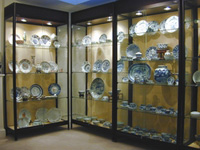
During the early years of the shop in Kensington Church Street we exhibited at the Olympia Fine Art and Antiques Fair. However, it became apparent that most of the collectors of Oriental Ceramics that visited the fair were known to us. So it seemed logical to hold exhibitions at the shop instead.
Due to the death of our friend and customer John Drew we were given part of his collection to sell in 2007.
We realized that he would have loved it if an exhibition of pieces from his collection was put on, so that is what we did. He had built a very interesting collection over many years.
The exhibition went extremely well and so further exhibitions of pieces from his collection followed in 2008. Later more pieces were sold from his collection via the website. We held many exhibitions and parties during the time in the shop, which were held in June and November, the latter was for a few years part of ‘Asian Art in London’.
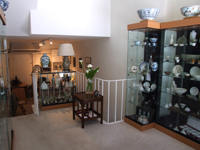
- Robert McPhersonIt was always busy with regulars coming in to see the ceramics that had just arrived and to meet us as well as each other. There was a very friendly atmosphere, often resembling a cafe rather than a shop. We liked to think of it as a traditional antique shop rather than a gallery.
EXPERT WITNESS
I have been on the vetting committee of several major antique fairs in London and the provinces, a job I have been doing for over twenty years. As a vetter I am responsible for authenticating antiques prior to them being offered for sale to the general public.
I have been a committee member of the Oriental Ceramic Society and have been on the board of ‘Asian Art in London’.
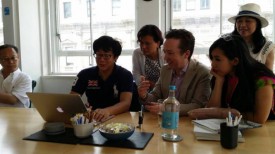
As an adviser to a government department, I have been called upon to authenticate and value Chinese ceramics, as well as give an opinion as to whether they are suitable for display in a public collection.
At several occasions I was called on as an expert witness to help asses the importance of Chinese and Japanese ceramics as part of a committee which decides if the objects are of national importance and should be kept in the country.
Because of my experience in the authentication of Chinese Ceramics in all these different areas, I was asked in 2016 to be on of the expert witnesses in the Court Case the Michael Butler Estate.
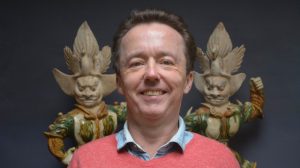
ASIAN ART IN LONDON
We frequently held exhibitions at our Kensington shop as part of Asian Art in London. Every Exhibition was prepared with the greatest of care to create a selection of items that would appeal to a variety of customers. We would clean and decorate the shop to make it a special occasion for both the customers as ourselves.
As with all our exhibitions there would be a queue from early in the morning, which many of my customers still remember.
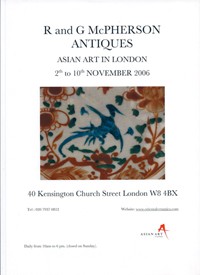
Since these exhibitions became so busy I decided to sell tickets the day before to give everyone a fair chance to see all the items. I have several customers remembering rushing to the shop to be first in line; some starting to line up early in the morning with sleeping bags.
After the Exhibition we celebrated with our customers at a party that we prepared with great care.
- Mary and Peter White, Collectors Oriental CeramicsOnce or twice a year he would hold an selling exhibition. Reasonably orderly queues would form from about 5.00 a.m. This was 'competitive collecting' and when Robert and Georgina appeared at about 9.00 a.m., Robert with numbered badges showing what order you were in the queue, and Georgie with a croissant, a lull descended until the doors opened at 12.00. There were a few moments of heightened excitement and the orderly queue became feral as everyone tried to stick the red dot onto their first choice.....second choice....etc. A few 'incidents' occurred as a particularly popular piece was nabbed by a long arm (only no. 4 in the queue) which managed to quickly thrust through and beat number one. These altercations could rankle for several years......
EIGHT DAYS IN JUNE
‘Eight Days In June’ was a combined exhibition of English Porcelain, English Pottery and now Oriental Ceramics held at various locations in Kensington Church Street during June. The immediacy, the excitement and the uncertainty of an auction suit some temperaments, responding eagerly to the glamour of the gavel. Yet the calmer and less hurried process of buying from a dealer, in a less frenzied environment, offers many advantages. The evolution of a business relationship with a specialist dealer, developed over many years and based upon mutual trust and respect, cannot be replicated by an auction house, its loyalty being divided between the buyer and the seller. The dealer with his specialized knowledge is able to act as a mentor, a touchstone for the opinions and aspirations of his client. Each transaction and each meeting of minds should be part of a longer association, enabling dealer and client to become partners, sharing the same motivation and the same enthusiasm.
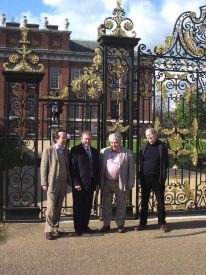
There are still many such partnerships, often blossoming into friendships but sadly, there are far fewer specialist dealers nowadays. Yet Eight Days in June, together with Art-Antiques London, Masterpiece and all the other kindred events in London in June, serve as a showcase, not only for the range and quality of the antiques available.
‘Eight Days In June’ was seen as a serious, specialized event. Well, on one level it is, but it can also be seen as an excuse for collectors and colleagues from around the world to meet up and have a good time. It is the perfect occasion to catch up with old friends and meet new ones. At its heart is a true love of ceramics and a never-ending quest for knowledge. The participants are a group of people who have known each other for years.
- Eline van den Berg, Curator museum Princessehof, LeeuwardenIt is so important to have passionate people like Robert, who like to share their knowledge and get people excited about the rich history of Asian ceramics. In addition, I enjoy the conversations we have about the many things going on in our field and I hope we continue to do so.
MOVE TO THE NETHERLANDS
After some difficult years in which life took a different path, I found myself challenged with new choices.
In 2017, I moved to the Netherlands to live with my partner Maaike. After dealing in London for 37 years it was very exciting to be starting a new life in a country I know very well and have always enjoyed visiting. However I also realised that this move had a great impact on the contacts I would have with the customers, colleagues and friends.
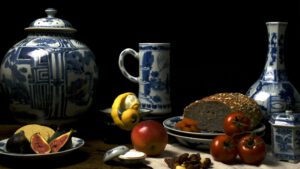
We live in the northern provenance of Friesland, in the small but beautiful rural town of Joure. It is not far from the wonderful ceramics museum the Princessehof in Leeuwarden and the Groninger museum, both famous for their excellent collection of ceramics. We are about one hour and forty minutes from Amsterdam.
In the last couple of years we have been successfully dealing from the Netherlands. We have been meeting new colleagues and new clients but also were able to keep a contact with the existing clients. I am in London several times a year to visit friends, collectors as well attend auctions and go to lectures.
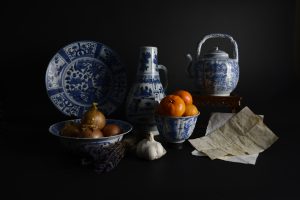
Even though Joure is not very familiar to people we have been privileged to host several meetings for ceramic lovers. Both the Norwegian Society of Oriental Ceramics and the Dutch group interested in oriental ceramics which is part of the KVVAK. came over for a casual lunch while we were able to talk and learn together about the subject we all love.
Since a few years I am trying to learn how to make pots in pottery class. It’s a great way to learn how clay feels and how to work it. For me it’s an additional way of learning more about the subject I have been learning about for 40 years.
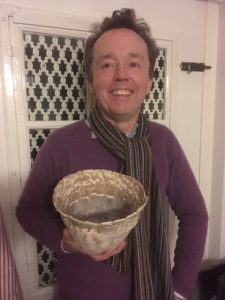
Maaike has found her way into the business which is far from what she is familiar with. Coming from the caring provision, she is now starting to be more involved and is working on the photography of the website. One of her ideas are the still lives which you will find on different places on this website.
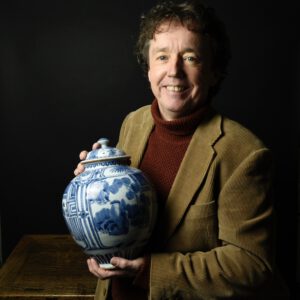
- Christiaan J.A. JörgI very much hope, Robert, you will feed our minds with knowledge and imagination for years to come, and add to the collections of those who really appreciate your approach !
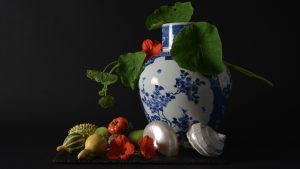
Robert McPherson Antiques. Still life – Photograph by Maaike Eijgenraam